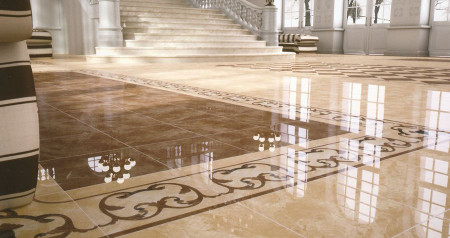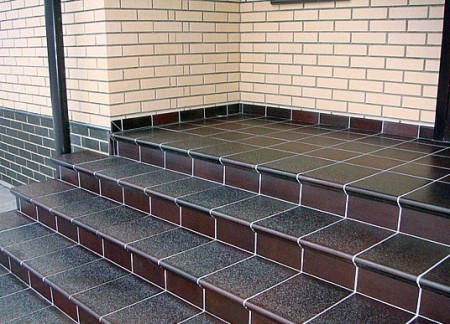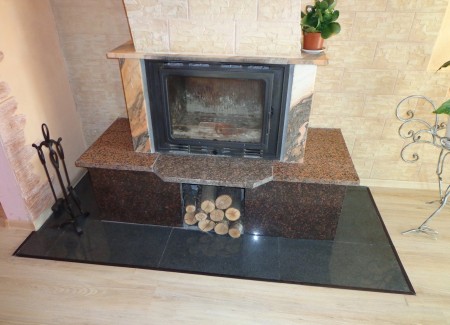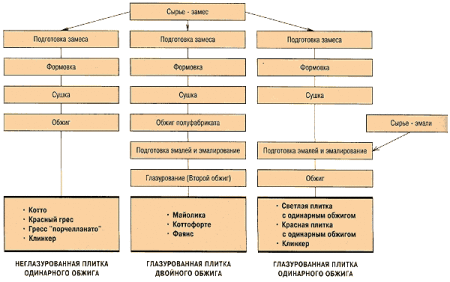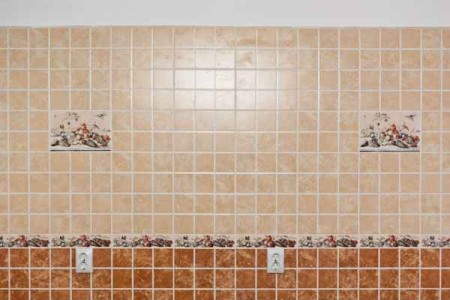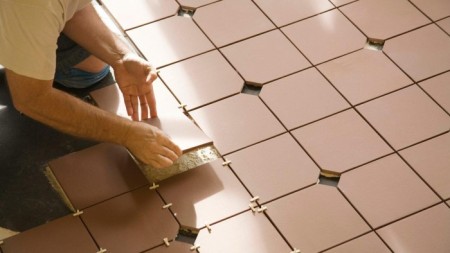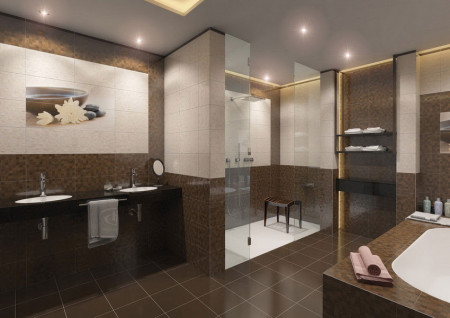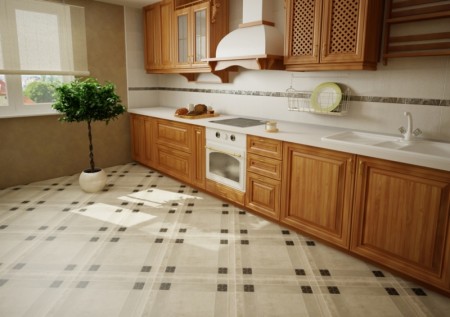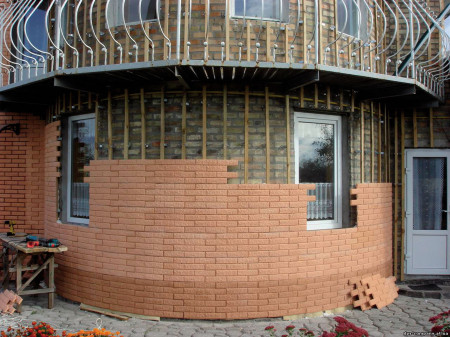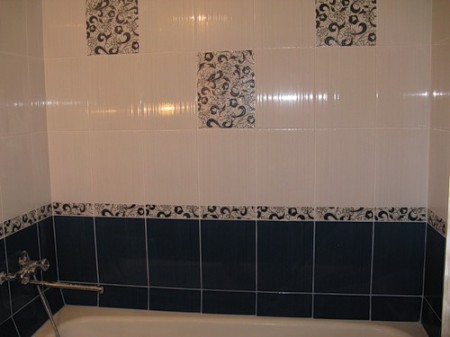Ceramic tiles - albeit not the cheapest, but very rational way of decorating interior spaces, facades of buildings, swimming pools, paths, stoves, fireplaces. The progenitor of ceramic tiles appeared in the third millennium BC, but in the form as it exists now - about two and a half thousand years ago. In those days, this excellent material could only be removed from the houses and palaces of the nobility and religious buildings, and only thanks to technical progress tiles became available to almost everyone.
Content
What is ceramic tile?
Ceramics is a solid material obtained by strong heating of inorganic substances such as clay, kaolin, talc. Special additives are used to impart additional strength and fusibility to the ceramic.
Ceramic tiles are a common name for a large group of finishing materials, which differ from each other by the raw materials, the manufacturing method and their technical characteristics.
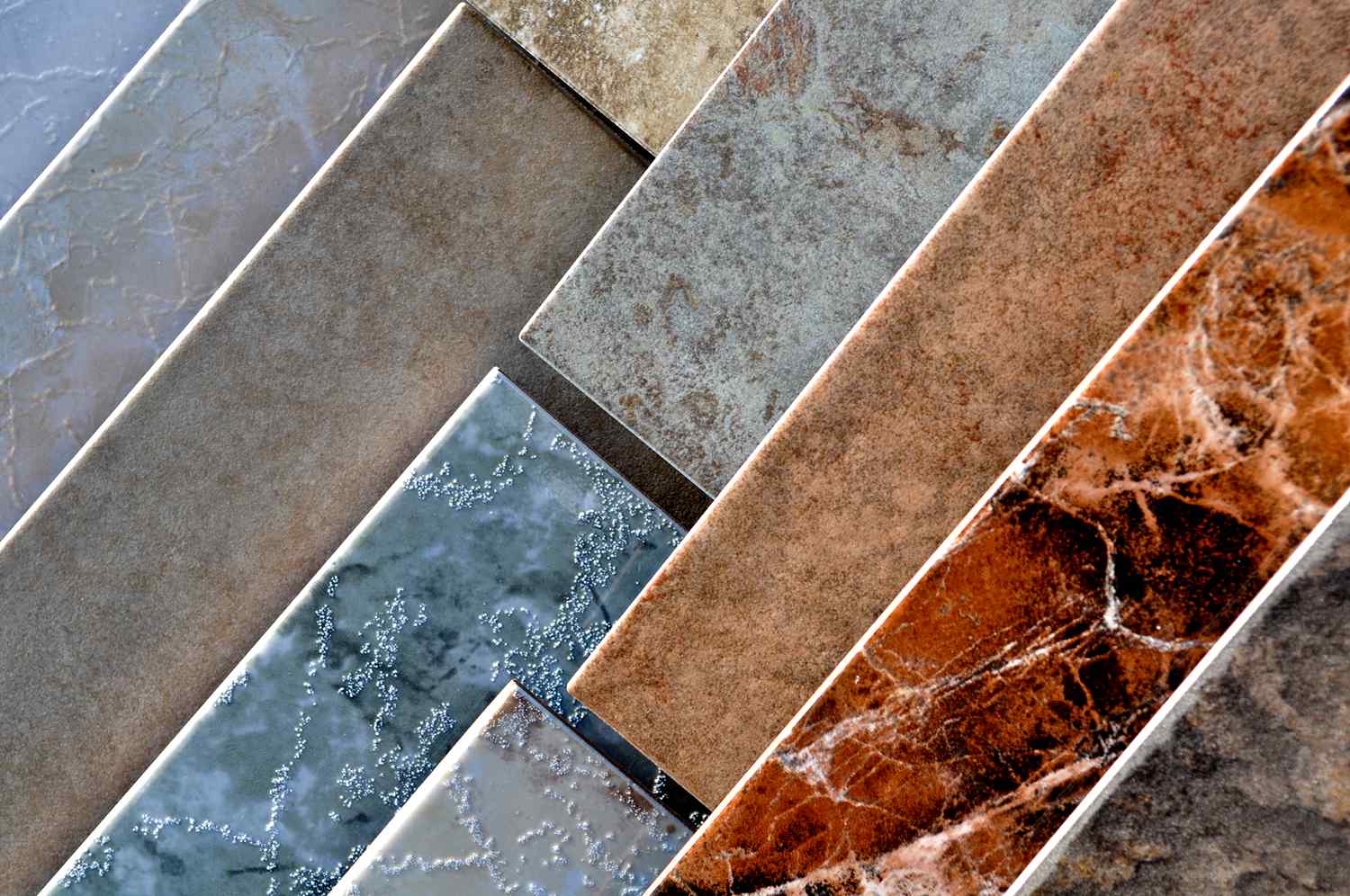
For a long time, the tiles were made exclusively of clay. Since clay is a very plastic material, before baking it can be given a variety of shapes, and using a matrix to produce the necessary number of tiles, the same in size and pattern.
Thanks to the improvement of production technology, it was possible to develop materials that differed significantly from their properties from conventional ceramic tiles and were called ceramic granite and clinker tiles.
Ceramic granite (porcelain granite) is a material obtained from an aqueous suspension of raw materials under semi-dry pressing under high pressure, and then by roasting at high temperature. Adding a coloring agent to the suspension can produce a variety of tiles.
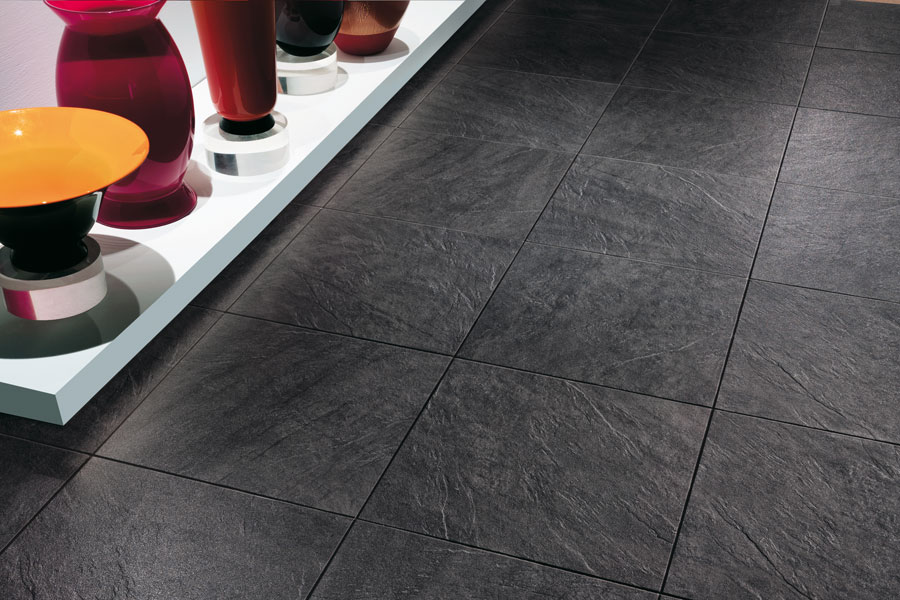
Ceramic granite has a high strength and frost resistance, has a moisture absorption lower than that of natural stone and is resistant to chemicals. It is successfully used for facing facades and for floor coverings in rooms with the most intensive load. Due to the dense structure, it is easier to clean ceramic granite from all types of impurities, but at negative temperatures, the tile laid on the cement slurry falls off, therefore special adhesive compositions are required.
Clinker is a material based on refractory shale clay baked at elevated temperatures up to 1450 ° C, low-porosity, with minimal moisture absorption, has increased mechanical strength, wear resistance and frost resistance. Tiles made of clinker are not inferior in strength to stone, they can be made glazed and unglazed, the main sphere of its application is facing of facades, stairs, laying floors in rooms with very intensive load, paving paths. Along with porcelain stoneware has the longest service life among similar materials.
Properties of ceramic tiles
Practical people know about the merits of ceramic tiles, so it is widely used in apartments, private homes, in production, in various public places. Ceramics literally filled our life, it is now difficult to imagine without tiles stores, cafes, restaurants, hospitals, swimming pools, home kitchens, bathrooms and even the hallway. Due to increased resistance to external influences, the tile is more durable and retains its original appearance for a long time. Recently, ceramic floor tiles often replace laminate, linoleum or parquet precisely because of increased wear resistance.
advantages of ceramic tiles
The material of ceramic tiles is natural, it is not decomposed and environmentally safe. Ceramics are hygienic, do not absorb liquids and odors, and therefore it is successfully used for facing kitchens. At the same time, it is very unpretentious in care, it easily removes various stains, heat treatment does not destroy the structure of the material. The tile does not create conditions for the development of the fungus and pathogens, which is why it is ideal for premises that require sterility. The moisture resistance of the tile allows it to be faced with both bathrooms and swimming pools.
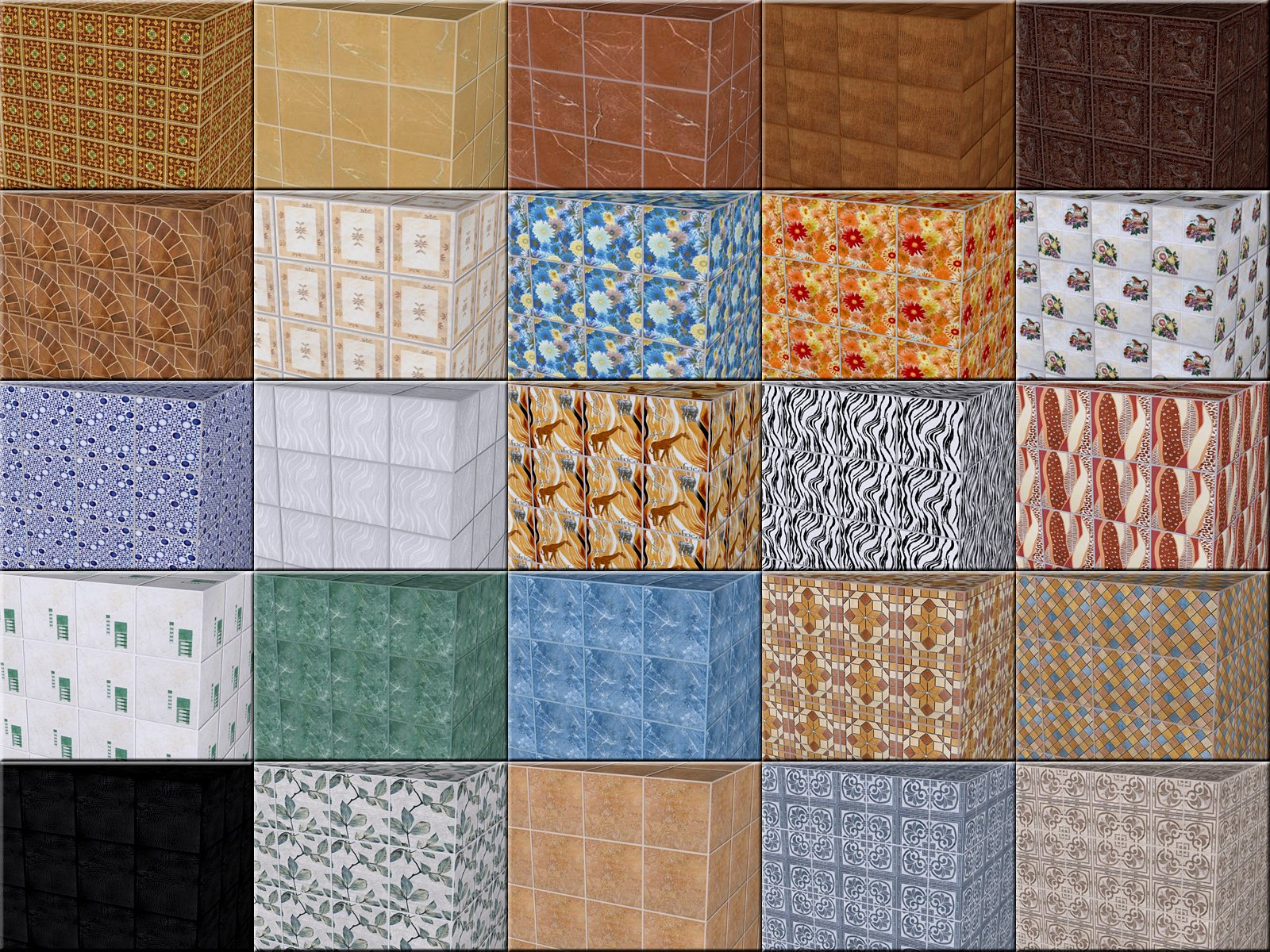
The tile is perfectly suited for various technical rooms, due to its excellent fire and dielectric properties can be used in rooms for working with corrosive chemicals. Ceramic tiles do not emit harmful substances when heated, they can decorate fireplaces and stoves.
In addition to the fact that the tile has higher performance and technical characteristics than other finishing materials, it can be any color and shade, it can imitate natural stone, wood, metal, textiles, leather and other materials. On the tile you can perform photo printing of any image.
Correctly and tastefully selected tiles cardinally changes the appearance of any room, and a wide range of tiles can satisfy the most refined requests of customers. An important factor is the affordable price of ceramic tiles, and if you take into account its service life in comparison with other finishing materials, then the choice will be in her favor.
disadvantages of ceramic tiles
Despite the large number of advantages of ceramic tiles, it also has some drawbacks:
- under the influence of direct sunlight tile at least slightly, but can burn out and eventually lose color and brightness;
- from frequent use of chemical detergents, the pattern applied to the tile loses its brightness;
- tiles are laid for a long time and if for some reason it is required to replace it, then removing the old will require very great effort;
- ceramic tile is brittle and can fall if a heavy object falls;
- tiles may crack in the event of shrinkage of buildings;
- replacement of cracked tiles is a rather laborious operation;
- uncomfortable sensations of cold tile floors, not equipped with a heating system;
- ceramics are not degraded, which creates some difficulties in its utilization.
Production of ceramic tiles
To obtain a high-quality product, scrupulous preparation of the raw materials is necessary. The mixture is thoroughly ground to a powdery state, then fed to the molding shop and then baked. For the production of ceramic tiles, two main methods are used: pressing and extrusion. The pressing method has become most widespread, as its use makes it possible to obtain a high-quality tile having a more even and smooth surface and minimal deviations in geometric dimensions. When extruding under pressure, the constituents of the substance in the form of a paste enter the mold through the hole, and when using the pressing method, the raw material that has been ground to a powder state enters the molds, which can be compressed under high pressure. The resulting tile after extrusion or pressing for several hours is exposed to a high temperature of 900 to 1450ºC. Ceramic tiles are unglazed and glazed.
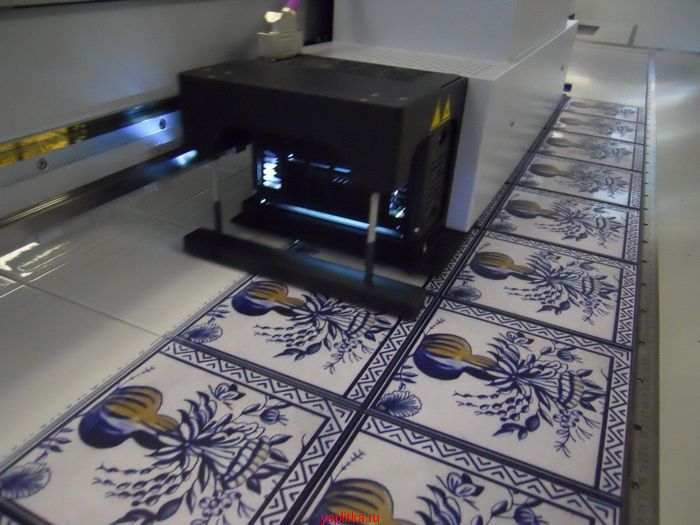
To protect and gloss on the front side of the tile is applied a special vitreous coating called glaze, after which the tile is fired in the oven. Glaze is colorless, colored, transparent and opaque. Glazed tiles have a hard top layer, and unglazed has a uniform composition throughout the thickness and, as a rule, does not contain a pattern. To paint unglazed tile in the raw materials are added color pigments. In the production of unglazed tiles, one firing is always used, whereas for glazed one single or double firing is used. It is believed that the tile after a double firing is more qualitative. With different combinations of used raw materials and the process used, various types of ceramic tiles are obtained. The reverse side of the tile is made of ribbed and rough so that the adhesive is held on the tile. It is thanks to the uneven surface that the tile is attached to the surface to be glued. The diagram below shows the process of producing tiles.
Types of ceramic tiles
The produced tiles can be classified in a variety of ways: at the place of use, wear, frost and moisture resistance, internal structure, etc. By the presence of glaze on the tile, it can be classified as unglazed and glazed, and by the number of fires produced - single and double firing. Depending on the porosity of the internal structure, the tile can be divided into two classes: low porosity and high porosity.

The moisture resistance of ceramic tiles directly depends on its porosity: the lower the porosity, the higher its moisture resistance. Low porosity tiles have high strength and frost resistance, that's why it is used for laying floors in rooms and outside them, for lining bathrooms, saunas and pools. High porosity tiles are used exclusively for walls in dry rooms due to its low mechanical strength.
At the place of use, the tile can be divided into two types: for exterior and interior works. Inside the premises, any tile can be used, and outside the premises where negative temperatures and precipitation may be affected, it is advisable to use only a low-porous, frost-resistant tile. According to its purpose, the tile is classified into the following categories.
wall tiles
For wall cladding is used highly porous tiles, which has a high moisture absorption and low resistance to mechanical stress. Due to its low abrasion factor, it is not intended for laying on the floor.
floor tiles
For flooring, tiles with low moisture absorption are used, it is assigned an abrasion class from 1 to 5. The tile can be glazed and unglazed, but it should not be slippery.
bathroom tiles
Since there are water, steam and detergents in the bathroom that leave stains, it is necessary to use low porosity tiles with increased chemical resistance and low moisture absorption. To reduce the number of interlace joints in places where there is direct contact with water, it is desirable to use a large tile. It is recommended to coat floors with a rough tile with an abrasion class not lower than the third.
kitchen tiles
Because of the evaporation in the cooking process, the kitchen refers to rooms in which the humidity of the air is increased. In addition, there are heavy objects in the room that can fall to the floor and break the tile, and hot fat, oil, vinegar and other products fall on the wall and floor, leaving spots. All this forces us to use a tile in the kitchen, which has high characteristics. For facing the walls of the kitchen, it is desirable to use a low-porous tile, which has a chemical resistance and increased moisture protection. To the kitchen floor tile the same requirements are imposed, in addition, it must have increased mechanical characteristics and be not lower than the 3rd class of abrasion.
tile for anteroom
The hallway is the place in an apartment or private house where the load on the floor tile is increased.
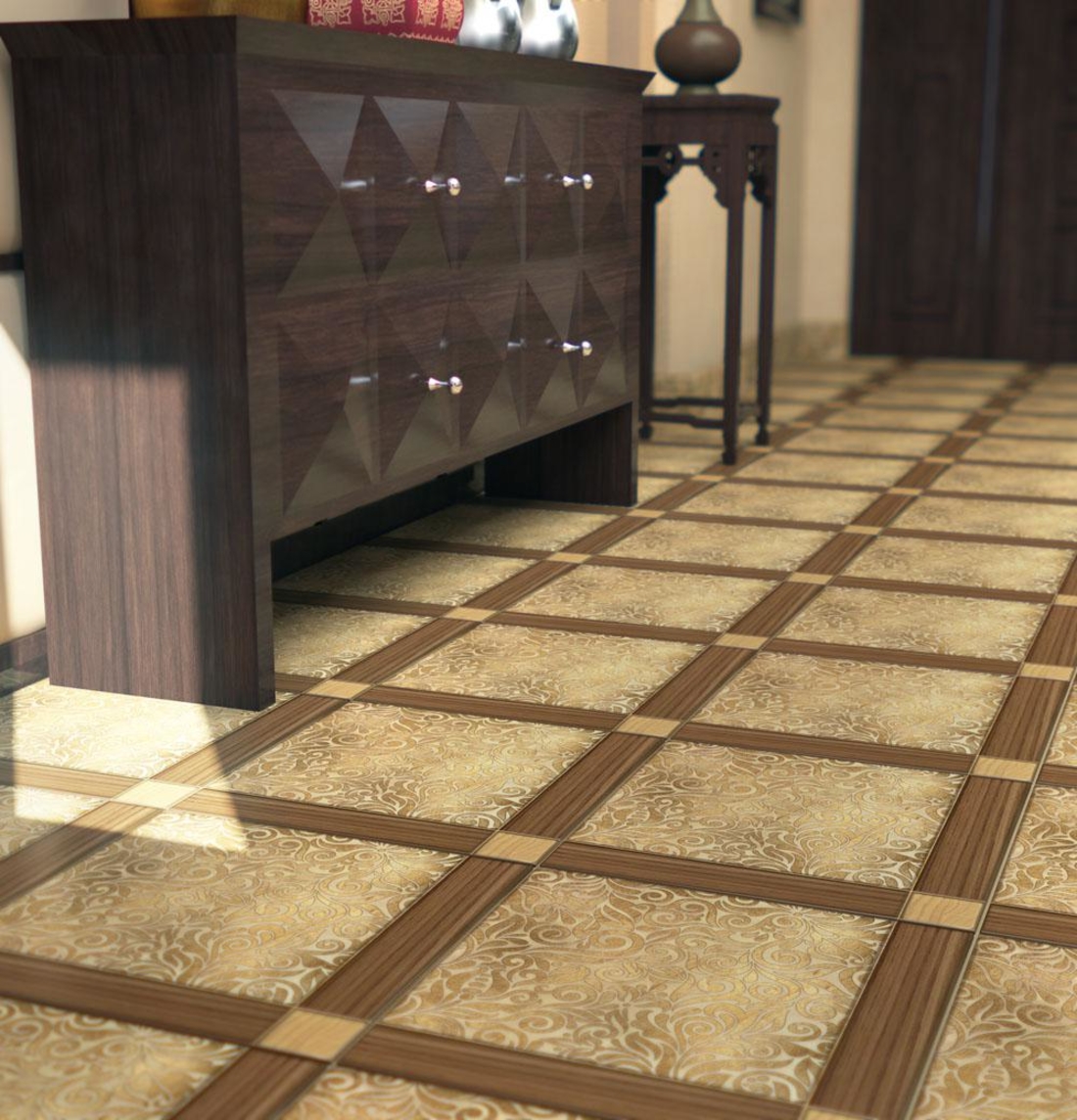
Tenants come from the street and on the sole of shoes they bring dirt and dust that stain the floor and are an abrasive material. Therefore, floor tiles in the hallway should be well cleaned and be resistant to abrasion, for which it is advisable to cover the floors with tiles of grade 3 abrasion and higher, and the ideal option can be the use of ceramic granite.
tiles for public places, shopping centers, offices
The abrasive properties of dust and dirt in combination with the constant movement of a large number of people can cause irreparable damage to the floor covering, besides, the tiles are exposed to frequent water effects with the addition of various detergents and disinfectants.
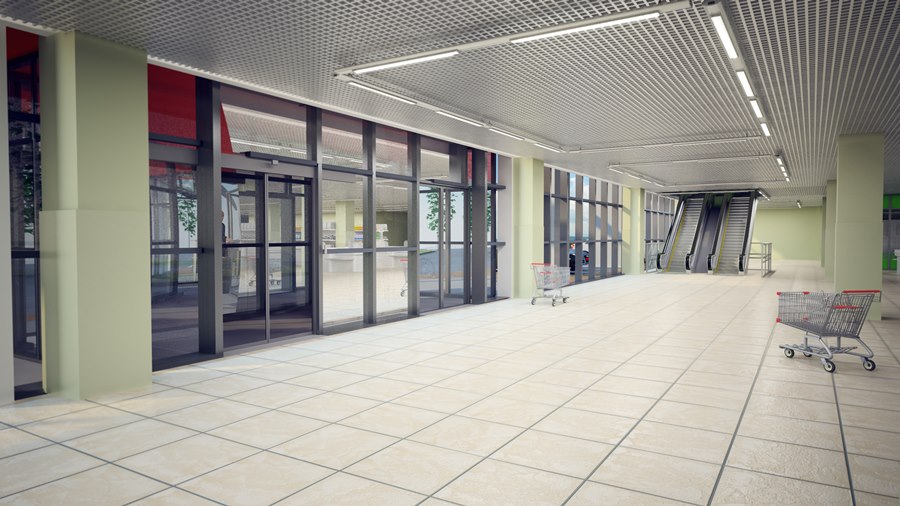
Therefore, for maintenance in public places suitable for abrasion resistant ceramic tiles of the 4 th class, and in large supermarkets, stations, airports - the maximum 5-th class. The best solution is the application of porcelain stoneware.
facade tiles, paving slabs, street tiles
When used on the streets, floor and wall coverings are under constant influence of such natural factors as atmospheric precipitation, high and low humidity, sunlight, ultraviolet radiation, high temperature changes with the change of time of day and year. Not every coating is capable of resisting the listed destructive factors for a long time, and frost-resistant low-porous tiles with a minimum moisture absorption are necessary for stacking in such difficult conditions. It is recommended to use ceramic granite or clinker tiles, which fully meet the requirements.
swimming pool tiles
Tile for swimming pools - low-porosity tiles with special glaze, resistant to long-term interaction with water.
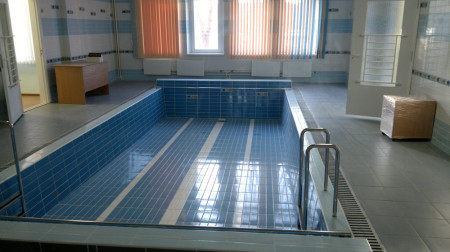
Tiles for swimming pools are made for objects located in the open air and placed in the room. Requirements for tiles for open objects are more stringent, as it is in more severe operating conditions. Tiles should have a smooth and rough surface, minimal moisture absorption, it should be well cleaned, do not allow the development of microorganisms and there should be no microcracks in it. According to European standards, tiles intended for swimming pools are divided into 3 classes, based on its anti-slip properties:
- A - for laying in locker rooms and utility rooms;
- В - for the lining of the pool bath, the area around the pool and shower rooms;
- C - to decorate the stairs inside the pool bath.
tiles for technical rooms
To technical rooms, and therefore, ceramic tiles, specific requirements are set. Tiles must have high strength and ability to withstand the movement of various techniques and equipment, withstand the effects of acids, alkalis, fuel, fat, not be afraid of temperature changes, be resistant to abrasion and have an anti-slip surface. It is recommended to use ceramic granite or clinker tiles.
Rules for choosing ceramic tiles
Acquiring ceramic tiles, the buyer is most often guided by the desire to choose a tile of beautiful color and often does not pay attention to such "little things" as structure, wear and moisture resistance, etc. The consumer does not need to know the technological process of making tiles, but he must be able to decipher the symbols printed on the factory packaging, as they can help to choose the right tile.
Most manufacturers that have a UNI quality certificate divide their products into three categories and accordingly label packages with tiles, and the labeling of the variety may not be applied to the tile itself. The 1st grade is marked in red, the 2nd is blue, the third is green, and the 1st grade is better than the 3rd. There is a marking of the variety in black, which indicates a commercial tile with a quality corresponding to the third grade. If the manufacturer does not have a UNI certificate, he can mark the tile in any convenient way.
To the floor tiles, there are high demands, since it has greater loads compared to the wall tile. To choose the right product, the consumer should know what is tearability of ceramic tiles. As a result of abrasive action of human shoes, gradual deterioration of the top layer of tile occurs. According to UNI EN 154 standards, depending on the purpose of the premises and the intensity of traffic in them, the tile is divided into five categories for wear resistance. On the package, the degree of wear resistance is indicated in Roman numerals next to PEI letters and a circular saw blade.
- The first category (PEI-I). Tiles have minimal durability and are suitable for premises where there are few people and soft home shoes are used. It is suitable for flooring in apartments and private houses.
- The second category (PEI-II). Tile is recommended for residential premises with an average attendance, has better wear resistance and can be used everywhere, except for hallways and stair flights.
- The third category (PEI-III). Tiles are also used in residential premises with a minimum and medium load, but it has better wear resistance compared to tiles in lower categories and can therefore be used on staircases and for flooring in the kitchen and hallway.
- The fourth category (PEI-IV). This tile has a high category of abrasion and is used in rooms with medium and high loads, for example, in shopping malls, offices, entrances, medical institutions.
- The fifth category (PEI-V). Tiles with maximum wear resistance, which is recommended for use in train stations, airports, large supermarkets, i.e. In rooms where there is a high traffic intensity.
Of course, the tiles of the fourth and fifth categories can be used for flooring in living quarters.
The image of the sole of a white shoe, placed on a dark background, means that this tile is floor. If the sole of the shoe is black on a white shaded background, then the tile has an increased wear resistance. The image of the hand indicates that the tile is a wall tile. The snowflake icon shows that the tile is frost-hardy, and two snowflakes - it has an increased frost resistance. Additional information specifying the degree of frost resistance may be indicated:
- AI and BI - tiles with increased frost resistance for outdoor work;
- AII and BII - tiles with an average degree of durability;
- AIII and BIII - tiles are only used indoors.
Letters show which production technology was used: A - extrusion, B - pressing. The digits "1" or "2" next to the flame image mean how many tiles were fired. According to the degree of stability of tiles to the destructive effect of chemicals, it can be divided into 3 categories. The letters next to the pattern of the bulb indicate how resistant the tiles are to chemicals:
- AA - tiles, resistant to chemicals;
- A, B and C - medium stability tiles;
- O - tile has a low resistance to chemicals.
Mosaic on a dark background indicates that the tint of individual tiles may differ from each other.
The image of the foot at an angle of 45 degrees indicates the coefficient of friction of the wet surface for the floor tiles. A rectangle with two arrows indicates the thickness of the tile. A rectangle with three arrows indicates the flexural strength. Figures in front of the cube with the designation Mg show the total area of tiles in the box. The figures in front of the cube with the designation Pezz indicate the number of tiles in the box. The figures in front of the cube with the designation Kg show the total weight of the tiles in the box.
The figures of the tile caliber show how much the tile dimensions deviate from the given one. The manufacturer in one package selects a tile with the same deviation, for example, the index +1 means a deviation of the size from the nominal by 1 mm in the direction of increase. The geometric dimensions may differ by ± 1.5 mm, the thickness by 0.5 mm. The sign E (%) shows the degree of moisture absorption in percent. The surface hardness figure shows a hardness of 3 to 9 on a ten-point Mohs scale, where talc with a hardness of 1 and a diamond with a hardness of 10 are taken as hardness standards. In addition, the manufacturer can specify other pictograms to indicate additional parameters.
Most often on sale there is a ceramic tile of a square or rectangular shape, but if desired, you can find even six- and octagonal. Even greater variety of sizes, there is no clear standard. Recently, tiles of rectangular shape are used more often, as it allows you to visually reshape the room, if desired, visually make the room wider or higher.
Often, ceramic tiles are sold in collections. This means that the manufacturer took care of the buyer and, taking into account the possible location and operating conditions, he himself selected a set of tiles for the kitchen or bathroom, uniform in style, color or pattern. The collection includes wall ceramic tiles and floor tiles, and can also offer frieze and decor, designed to decorate the room.
The freeze is a strip bearing an ornament, and visually restraining on top a wall with a tile. Freese can also decorate the joints of the tile.
The decor is tile with a pattern. You can place one decor in the center of the wall or make it repeat with a certain frequency.
On sale it is possible to find a tile for every taste and a purse: an inexpensive but high-quality domestic, and exclusive well-known world manufacturers that will successfully serve for many years.
Helpful Tips
- light tile visually enlarges the room, dark tile - reduces;
- to create the impression of a large height in low spaces it is sufficient to place a vertically rectangular tile vertically or to provide a vertical strip or pattern;
- in rooms with a large area, it is better to look large tiles;
- in the premises of a small area, it is advisable to lay a small tile that will visually increase the size of the room;
- when tiling with small dimensions, the number of seams increases;
- in the bathroom it is not recommended to use floor glazed tiles with a glossy surface;
- in the kitchen and bathroom it is advisable to use a wall glazed tile, t. it is easier to remove fat, drops of water and foam;
- before laying in the apartment floor tiles, it is desirable to provide installation of a floor heating system;
- it is undesirable to lay the wall tile on the floor because of its lower density and wear resistance;
- the pollution is less noticeable on the tile with a matte surface or a non-uniform pattern;
- on a glossy tile of dark shades, spots, scratches, chips are very noticeable;
- glossy surfaces are more elegant, but require careful care;
- to clean the tiles, do not use abrasive cleaning agents, as they damage the top layer;
- when calculating the required number of tiles, a stock of 5 to 15% should be taken into account;
- the right amount of tiles must be purchased at a time, since the next batch can differ in tint;
- tiles when buying should be carefully checked, cracks, chips, grain, bubbles and smudges indicate a low quality, so the purchase of such a tile should be discarded.



